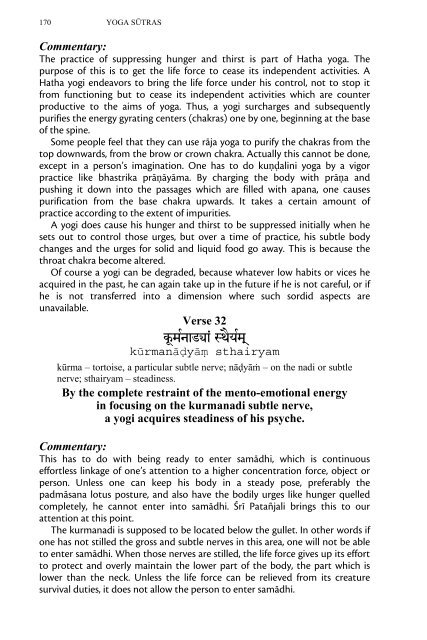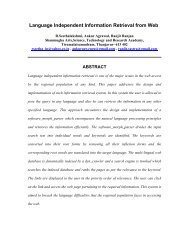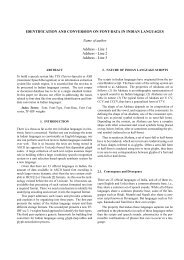Create successful ePaper yourself
Turn your PDF publications into a flip-book with our unique Google optimized e-Paper software.
170 YOGA SŪTRAS<br />
Commentary:<br />
The practice of suppressing hunger and thirst is part of Hatha yoga. The<br />
purpose of this is to get the life force to cease its independent activities. A<br />
Hatha yogi endeavors to bring the life force under his control, not to stop it<br />
from functioning but to cease its independent activities which are counter<br />
productive to the aims of yoga. Thus, a yogi surcharges and subsequently<br />
purifies the energy gyrating centers (chakras) one by one, beginning at the base<br />
of the spine.<br />
Some people feel that they can use rāja yoga to purify the chakras from the<br />
top downwards, from the brow or crown chakra. Actually this cannot be done,<br />
except in a person’s imagination. One has to do kuṇḍalini yoga by a vigor<br />
practice like bhastrika prāṇāyāma. By charging the body with prāṇa and<br />
pushing it down into the passages which are filled with apana, one causes<br />
purification from the base chakra upwards. It takes a certain amount of<br />
practice according to the extent of impurities.<br />
A yogi does cause his hunger and thirst to be suppressed initially when he<br />
sets out to control those urges, but over a time of practice, his subtle body<br />
changes and the urges for solid and liquid food go away. This is because the<br />
throat chakra become altered.<br />
Of course a yogi can be degraded, because whatever low habits or vices he<br />
acquired in the past, he can again take up in the future if he is not careful, or if<br />
he is not transferred into a dimension where such sordid aspects are<br />
unavailable.<br />
Verse 32<br />
kªmRnaf(a< SwEyRm!<br />
kūrmanāḍyāṃ sthairyam<br />
kūrma – tortoise, a particular subtle nerve; nāḍyāṁ – on the nadi or subtle<br />
nerve; sthairyam – steadiness.<br />
By the complete restraint of the mento-emotional energy<br />
in focusing on the kurmanadi subtle nerve,<br />
a yogi acquires steadiness of his psyche.<br />
Commentary:<br />
This has to do with being ready to enter samādhi, which is continuous<br />
effortless linkage of one’s attention to a higher concentration force, object or<br />
person. Unless one can keep his body in a steady pose, preferably the<br />
padmāsana lotus posture, and also have the bodily urges like hunger quelled<br />
completely, he cannot enter into samādhi. Śrī Patañjali brings this to our<br />
attention at this point.<br />
The kurmanadi is supposed to be located below the gullet. In other words if<br />
one has not stilled the gross and subtle nerves in this area, one will not be able<br />
to enter samādhi. When those nerves are stilled, the life force gives up its effort<br />
to protect and overly maintain the lower part of the body, the part which is<br />
lower than the neck. Unless the life force can be relieved from its creature<br />
survival duties, it does not allow the person to enter samādhi.










